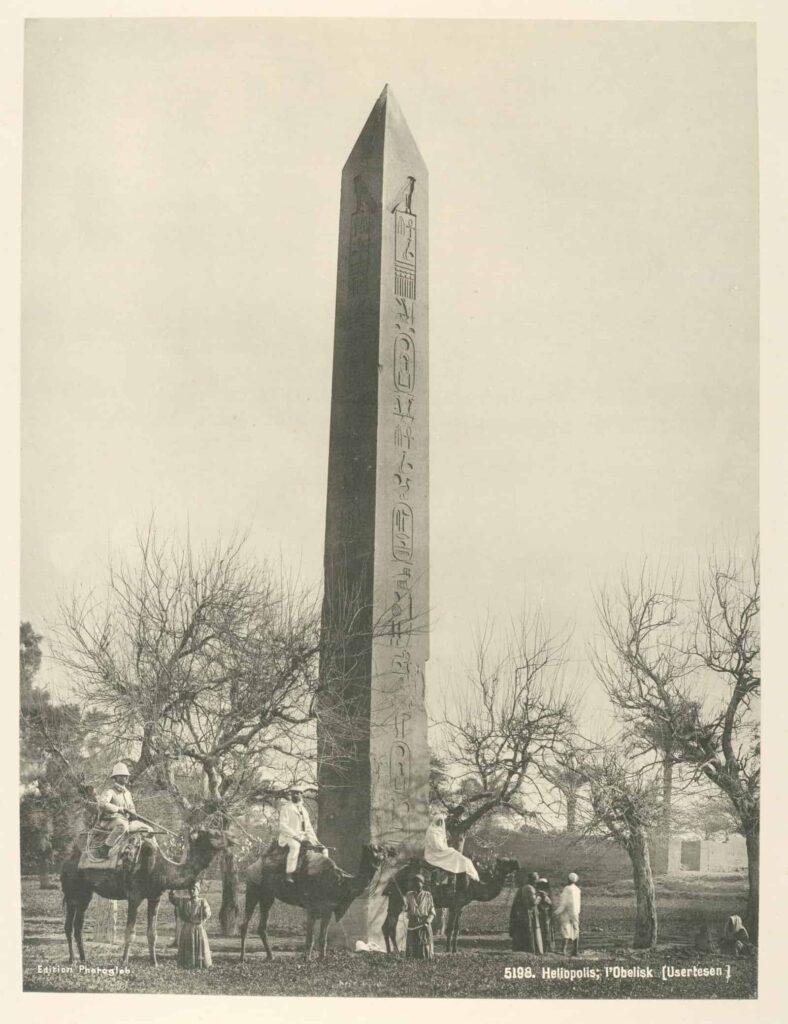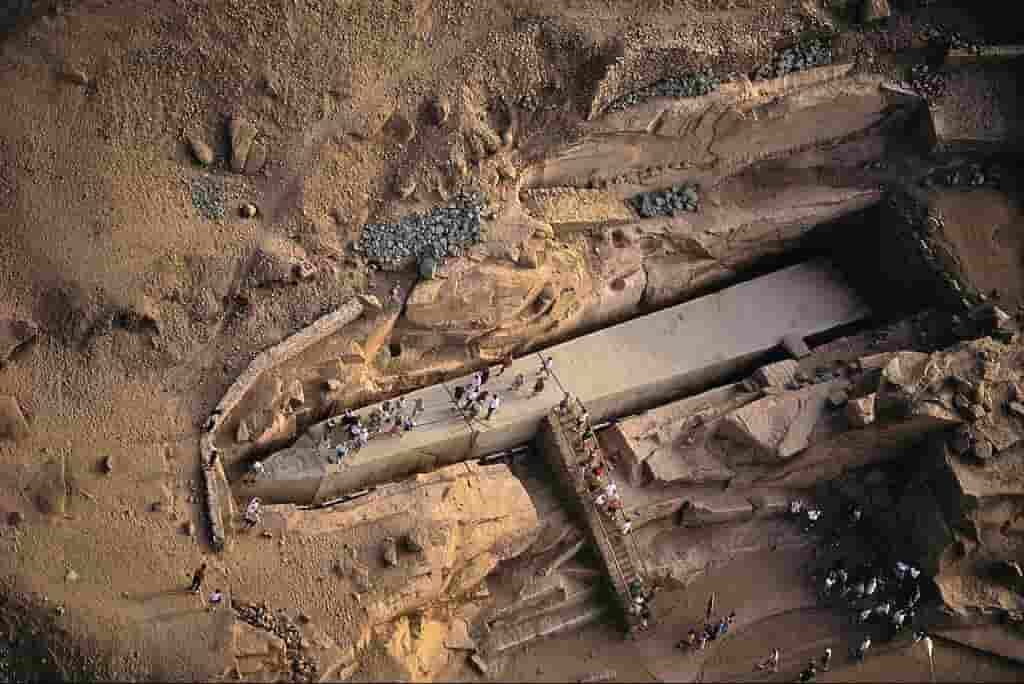The obelisk is hundreds of years old, and through its construction, the ancient Egyptians aimed to honor the Sun god.
Obelisks are iconic monuments and masterpieces of ancient Egyptian engineering. They typically stand in imposing pairs in front of temple entrances, as noted by Egypt’s Ministry of Tourism and Antiquities. The oldest preserved obelisk is located in the capital of Egypt, Cairo.
In the ancient Egyptian language, obelisks were referred to as “tekhen.” They are composed of a single piece of stone with a rectangular shaft and are crowned by a golden pyramidion (a pyramid-shaped top) to reflect the sun’s rays.
These structures are associated with solar mythology and symbolize the benben, the initial earth that came into existence from which the Sun God would rise to create the universe, according to the Ministry’s information.
Furthermore, it’s common to observe the four faces adorned with hieroglyphics, often containing religious dedications, usually to the Sun God, and commemorations of rulers, as stated in the Encyclopedia Britannica.
The Oldest Obelisk:
It’s known that the first obelisks were erected in the Fourth Egyptian Dynasty, between the years 2575 and 2465 BC. However, there are no existing examples from that time, as explained by Britannica.
The oldest surviving monolith dates back to the reign of Senusret I (1918-1875 BC) and is located in Heliopolis, Cairo, where it is believed there was a temple dedicated to the Sun God.








